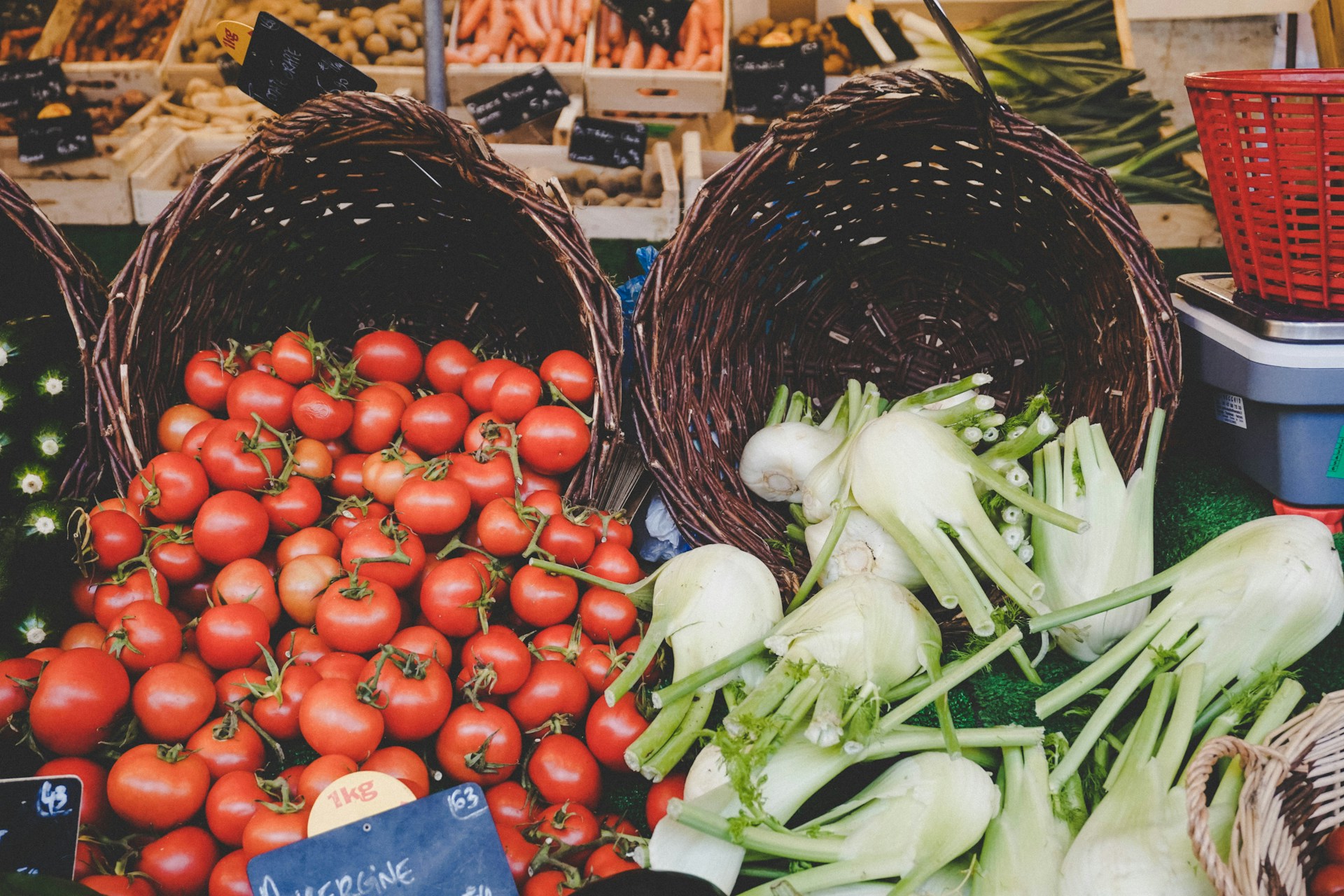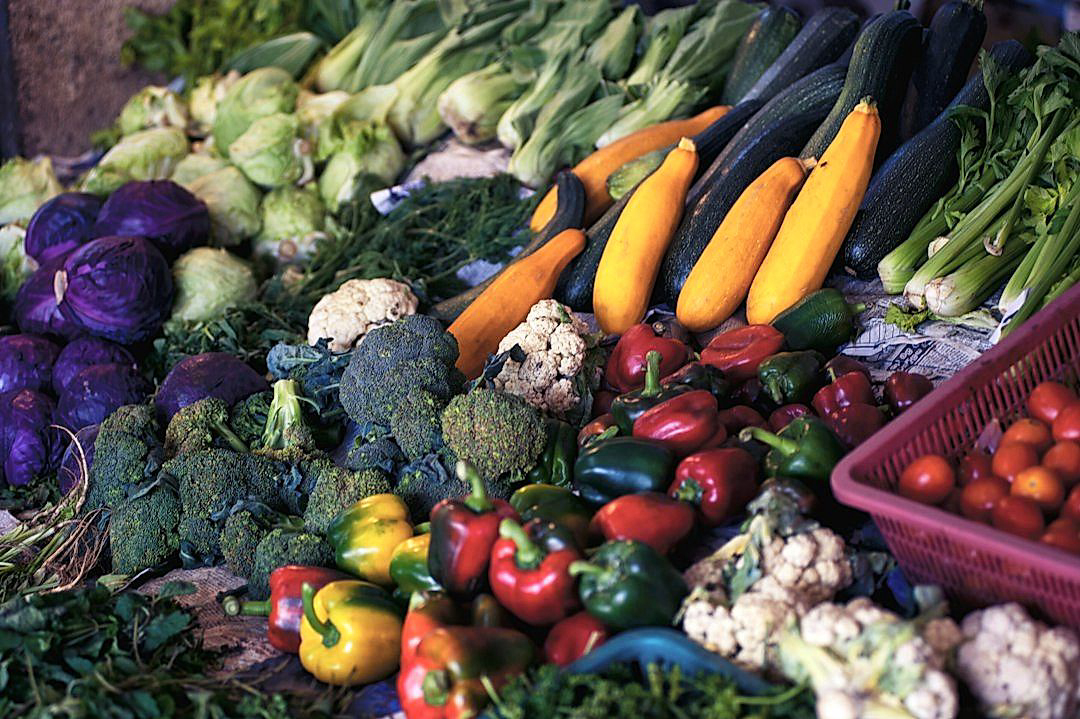Efficient distribution of produce has always posed unique challenges for the supply chain sector.
The movement of farm-fresh goods across vast geographical areas demands strategic planning and robust infrastructure.
Furthermore, these methods need to be sustainable to mitigate the adverse impacts on the environment and achieve green goals.
This endeavor becomes even more crucial considering the escalating climate concerns globally.
This blog will delve deep into sustainable transport strategies that are crucial for addressing these issues.
We’ll explore the ways organizations are transforming their operational procedures to ensure eco-friendly, efficient transport for the distribution of produce.
Contents
- Sustainable Transport Strategies In Produce Distribution
- 1. Use fuel-efficient, low-emission transportation vehicles.
- 2. Adopt Renewable Energy Sources for Transportation
- 3. Implement Route Optimization to Reduce Distances
- 4. Encourage Local Sourcing to Minimize Transport
- 5. Improve Load Efficiency to Reduce Trips.
- 6. Use Intermodal Transportation Systems
- 7. Regular vehicle maintenance for optimal functioning
- The Bottom Line
Sustainable Transport Strategies In Produce Distribution
1. Use fuel-efficient, low-emission transportation vehicles.
In the realm of produce distribution, the concept of sustainability plays a critical role.
Among the foremost steps that can be taken towards making the transport process more sustainable is to use fuel-efficient, low-emission transportation vehicles.
The use of fuel-efficient vehicles can drastically lower the overall carbon footprint related to produce distribution, presenting an effective strategy towards environmental preservation.
Notably, fuel-efficient vehicles use less fuel to travel the same distance as compared to conventional vehicles.
This not only reduces operating costs, making the distribution process more cost-effective, but also goes a long way in lowering the amount of greenhouse gas emissions.
Reducing greenhouse gas emissions is crucial in our fight against climate change and to sustain our environment.
Low-emission vehicles take it a step further by specifically being designed to release a minimal quantity of auto pollutants into the atmosphere.
This is of particular importance as such pollutants detrimentally impact air quality, posing a threat to both the environment and public health.
The broader utilization of fuel-efficient, low-emission vehicles can therefore significantly maintain air quality and curb the overall environmental impact of produce distribution.
Beyond their environmental benefits, these vehicles also often require less maintenance compared to conventional ones
, which can be factored into cost and efficiency calculations.Filling up less frequently, less maintenance, and a less harmful impact on the environment makes these vehicles an attractive option for transportation.
It’s also worth pointing out that many nations and states are offering incentives for fuel-efficient vehicles, and these financial benefits can add to the appeal of adopting such vehicles for produce distribution.
However, it is essential for companies to consider the initial investment needed for these vehicles as they can be costly to acquire.
While they may be more expensive upfront, the cumulative benefits of reduced fuel consumption, lowered maintenance costs, and potential state incentives often lead to a greater return on investment in the long run.
Ultimately, the incorporation of low-emission, fuel-efficient vehicles in produce distribution is a positive step towards sustainable transport that brings with it a slew of economic, environmental, and public health advantages.
2. Adopt Renewable Energy Sources for Transportation
One major step in creating sustainable transport strategies in produce distribution is to adopt renewable energy sources for transportation.
This not only reduces the direct greenhouse gas emissions from vehicles but also promotes the development of renewable energy industries.
Common types of renewable energy sources available for transportation include biodiesel, ethanol, hydrogen fuel cells, and solar power.
Many companies and governments are increasingly investing in these renewable technologies as greener alternatives to conventional fuels.
Adoption of renewable energy sources for transportation presents enormous potential to reduce both air pollutants and greenhouse gas emissions, considerably lowering the environmental impact of this sector.
For instance, biodiesel is a form of renewable energy derived from animal fats, plant oils, and recycled restaurant grease, which can be used to power diesel engines.
Biodiesel is generally considered a low-carbon fuel because the carbon dioxide it releases when burned is offset by the carbon dioxide absorbed by the plants used to produce it.
Similarly, ethanol, primarily derived from corn and sugarcane, is often blended with gasoline to produce a lower-emission fuel.
Hydrogen fuel cells also offer a promising alternative, producing only water as a byproduct and thus eliminating harmful emissions altogether.
Solar power, while not generally used directly for vehicle propulsion, can be harnessed to charge electric vehicles or to power infrastructure related to transportation.
All the aforementioned renewable energy sources are generally sustainable as they are derived from abundant or regenerating natural resources.
However, the successful adoption of these energy sources requires proper infrastructure, such as fueling stations and maintenance facilities.
Furthermore, for these renewable energies’ potential to be realized, policy support, research and development, as well as consumer acceptance are crucial.
Despite the challenges, transitioning to renewables can result in significant reductions in greenhouse gases and other pollutants, offering a viable path towards sustainable, cleaner transportation in produce distribution.
Moreover, it can also contribute to energy security, economic development, and public health.
3. Implement Route Optimization to Reduce Distances
Among the strategic steps towards adopting a sustainable transportation in produce distribution include the optimization of logistics routes to reduce transit distances.
The concept of route optimization involves the application of certain algorithms and data analysis to identify the most efficient routes in terms of fuel consumption, time, and distance.
One significant application of route optimization lies in predictive analytics, which facilitates the prediction of future consumer demands to enable better planning of routes.
This approach is advantageous in reducing transportation costs for companies and subsequently decreasing the overall carbon footprint of the logistics process.
In the context of produce distribution, the consistent implementation of effective route optimization strategies can lead to remarkable savings on fuel consumption, vehicle maintenance costs, and overall operation costs.
The benefits also overflow into the aspect of customer service, with the timely delivery of fresh produce becoming more achievable through the efficient planning and mapping of delivery schedules.
Route optimization can be coupled with the utilization of real-time traffic data to avoid congestions and minimize idling time, a significant contributor of greenhouse gas emissions.
Along these lines, advancements in technology such as GPS tracking, data analytics software, and state-of-the-art routing algorithms are becoming indispensable tools in supporting route optimization strategies.
Such technologies provide crucial insights into consumer behavior, peak demand times, and changes in traffic patterns, which can all be integrated into developing more efficient delivery routes.
Critical to the success of route optimization is the commitment of upper management towards the continuous improvement of logistics and transport systems, encouraging innovation and implementation of the latest technological advancements.
Moreover, regular training of staff is also imperative to effectively leverage route optimization software and execute route plans as intended.
Efforts can be tailored according to different factors such as the size of the company, type of produce, and specific delivery areas to achieve a highly customized solution.
In summary, route optimization emerges as a significant part of sustainable transport strategies in produce distribution, offering valuable solutions for minimizing the environmental impact of transport while improving logistics and customer service.
It’s a cross-cutting strategy that enhances other sustainable practices like adopting low emission vehicles and leveraging intermodal transportation systems.
The implementation of route optimization requires a proactive approach, with the regular evaluation and updating of strategies to keep up with evolving consumer demands and environmental sustainability targets.
4. Encourage Local Sourcing to Minimize Transport
When it comes to developing sustainable transport strategies in produce distribution, one big step is to encourage local sourcing to minimize transportation.
The concept of local sourcing is not a new one, but its potential to reduce transportation needs is significant.
Local sourcing simply means purchasing goods or produce from local suppliers or farmers.
This not only supports the local economy but, more importantly for our topic, reduces the need for long-haul transportation.
By buying local, the distance that food and other goods need to travel is greatly reduced and, as a result, so are the emissions produced by these travels.
Furthermore, it means the goods are likely fresher and of better quality, because they haven’t spent too much time in transit.
For businesses, this can translate into cost savings in terms of fuel and vehicle maintenance, while customers enjoy fresher, better quality products.
This is a win-win situation and an effective way to move towards more sustainable practices in transport and distribution.
However, implementing this strategy requires creating a supportive environment that encourages local sourcing.
Businesses need to be educated about the benefits and potential savings of sourcing locally, including the fact that it can reduce their carbon footprint.
Local suppliers also need support in scaling up their production to meet increasing demand without compromising on quality or sustainability.
There also needs to be efficient distribution networks within local regions in order to facilitate timely and efficient delivery from local suppliers to customers.
Overall, encouraging local sourcing is an important step in establishing a more sustainable transport strategy in produce distribution.
It not only supports local economies and reduces carbon emissions, but also offers benefits to consumers in terms of fresher, better quality products.
The implementation requires efforts from all stakeholders, including businesses, local suppliers, and customers to make it a realistic and effective solution.
5. Improve Load Efficiency to Reduce Trips.
One key strategy in sustainable transport within the context of produce distribution is improving load efficiency, as it directly correlates with the number of trips a vehicle has to make.
Efficient load management, by definition, involves maximizing the volume and weight of goods that can be moved in one trip without compromising safety.
Notably, the fewer trips a vehicle has to make, the less fuel is consumed, effectively reducing the emission of greenhouse gases and other pollutants.
The effective application of load efficiency strategies can result in significant cost savings in fuel and labor, reduced wear and tear on vehicles, and a decrease in the overall carbon footprint of the operation.
Load efficiency can be improved by adopting well-planned pallet loading patterns, which allows more items to fit in a particular space.
Software solutions can also be harnessed for their capability to optimize space usage within transportation vehicles, taking into account weight distribution, volume and shape of packages.
Small adjustments such as using appropriately sized vehicles for different loads can reduce unnecessary fuel consumption and emissions, reinforcing sustainability measures.
This strategy also involves consolidating orders whenever possible to increase load weight, hence, minimizing the number of trips.
It is crucial, however, to note that overloading can cause severe damage to the vehicle, increase the risk of accidents, and is generally illegal, hence, there needs to be a balance in achieving load efficiency.
Training staff in safe and efficient loading and unloading processes is another effective way to make every trip as productive as possible.
As a supportive measure to increase load efficiency, companies can utilize reverse logistics systems which allow for efficient use of return trips to pick up raw materials or other goods.
All these interventions not only contribute to environmental sustainability but also make excellent business sense as they result in significant cost savings.
In essence, improving load efficiency fundamentally relies on sophisticated planning, monitoring, and execution. Therefore, ongoing review and improvement practices should be incorporated into the operational procedures.
Continuous innovation in vehicle design and packaging processes also plays a vital role in enhancing load efficiency over time.
While it is a challenge to strive for optimal efficiency and simultaneously navigate legal constraints, the long term benefits in terms of sustainability and cost-efficiency are remarkably significant.
6. Use Intermodal Transportation Systems
One of the most effective strategies to achieve sustainable transport within the realm of produce distribution is the utilization of intermodal transportation systems.
This system is a combination of at least two different modes of transportation in a single trip to move goods from one point to another.
For instance, a shipment of vegetables may be transported via truck from a farm to a railway station, carried by train to a seaport, and then shipped overseas to the destination market.
This mode of transportation is budding into relevance primarily because it presents a win-win proposition for both the environment and the economy.
Intermodal transportation systems, not only significantly reduce greenhouse gas emissions, it also provides a cost-effective transportation solution for produce distribution.
By amalgamating numerous transportation methods such as trucking, railways, and shipping, it helps in achieving greater efficiency and flexibility in managing logistical challenges.
It encourages the proficient use of available resources, thus improves logistics performance indicators like speed, reliability, and capacity.
Companies employing intermodal transportation systems are able to move large quantities of produce swiftly across great distances, which is instrumental in maintaining the freshness and quality of the produce.
As we know, the produce sector is extremely time-sensitive, a short delay can often lead to substantial losses, hence efficient transportation is of paramount importance.
Additionally, it’s worth mentioning that intermodal transportation systems could also reduce road congestion as it curtails the number of vehicles on the road, especially trucks that contribute significantly to traffic congestion.
From the perspective of sustainable methodology, this system favors environmental preservation as it is intended to minimize carbon emissions and fuel consumption.
Research shows that shifting freight from trucking to rail or sea services can lead to a drop in CO2 emissions by as much as 50-75%.
Furthermore, by reducing the need for long-haul trucking, this system also serves as an effective means of reducing tire and brake wear, thus lessening road wear.
However, the success of intermodal transportation systems mainly lies in the strength of the underlying logistic infrastructure.
Therefore, it is incumbent upon the government and the private stakeholders involved in produce distribution to invest substantially in crafting an efficient, reliable, and robust infrastructure that can effectively accommodate intermodal transportation.
This may involve a substantial initial outlay, but considering the long-term sustainable benefits, it certainly seems like a worthy investment to undertake.
7. Regular vehicle maintenance for optimal functioning
Within any framework of sustainable transport strategies in produce distribution, one element that should not be overlooked is the aspect of regular vehicle maintenance.
This plays a significant role in ensuring optimal functioning of the vehicles and consequently reducing emissions.
Regularly serviced vehicles ensure higher fuel efficiency, which in the long term, leads to significant cost savings and reduction in carbon emissions.
A well-maintained vehicle has better lubrication, clean air filters, and balanced tires—all elements that contribute to improved fuel efficiency.
Therefore, in the context of sustainable transport, regular vehicle maintenance not only contributes to economic viability but also to environmental sustainability.
Regular vehicle maintenance also extends the life span of the vehicles used in produce distribution.
Timely maintenance activities such as oil changes, tire rotations, and brake inspections can prevent costly repairs and replacements down the line, thereby reducing waste generation.
It is also important to point out that a properly maintained vehicle provides a safe and comfortable ride for the driver, creating a better work environment and contributing to improved efficiency.
Transport companies can ensure regular vehicle maintenance by implementing a preventive maintenance schedule that includes a detailed checklist for each vehicle in the fleet.
Such a schedule can track necessary repairs and replacements, allowing for proactive rather than reactive maintenance.
This approach invariably translates to less vehicle downtime and minimizes disruption to produce distribution schedules.
In the context of sustainability, it is advisable to use eco-friendly products for vehicle maintenance where possible.
For instance, the use of re-refined engine oil and coolant made from organic acid technology can help reduce the environmental impact of regular maintenance.
By conducting regular vehicle maintenance to optimize the functioning of transport vehicles, companies engaged in produce distribution are taking a concrete step towards improving sustainability in their operations.
Importantly, regular vehicle maintenance is not just a standalone strategy—it forms part of a larger framework of holistic and interconnected strategies that bring about sustainable transport in produce distribution.
The Bottom Line
Optimizing and transforming how we transport goods and services is fundamental in combating climate change and reducing our carbon footprint.
From utilizing fuel-efficient vehicles and harnessing renewable energy sources for transport to promoting local sourcing and rigorous vehicle maintenance, we can significantly minimize greenhouse gas emissions.
In addition, through strategic route planning and improving load efficiency, we can decrease fuel consumption.
Furthermore, adopting intermodal transport systems can enhance logistics efficiency.
These sustainable transportation practices are not only beneficial for the environment but also promise considerable cost savings and improved operational efficiency.
Therefore, it’s an essential and beneficial endeavor for both businesses and society at large.




